
Overview - FOSTEC Amazon Strategy Consulting Services
FOSTEC & Company is the leading independent strategy consulting boutique with a focus on digitalisation and e-commerce.
Having already developed more than 200 Amazon strategies for brands from a wide variety of sectors, we are market leaders in the Amazon consulting market in Europe. We think and act based on entrepreneurial values and develop intelligent, actionable solutions with our clients to help unleash their full Amazon market potential.
With a market share of 66% in German B2C E-Commerce (see Figure 1), Amazon is an undeniable heavyweight and the platform via which, in statistical terms, 66 Cents of every Euro in e-commerce in Germany is transacted. Germany is also the largest Amazon market within Europe, with Amazon.co.uk (about 70% of Amazon.de), Amazon.fr. (about 40% of Amazon.de), Amazon.it (about 20% from Amazon.de) and Amazon.es (about 10% of Amazon.de) behind it. However, Amazon.de is relatively small compared to Amazon.com, which is about eight times larger.
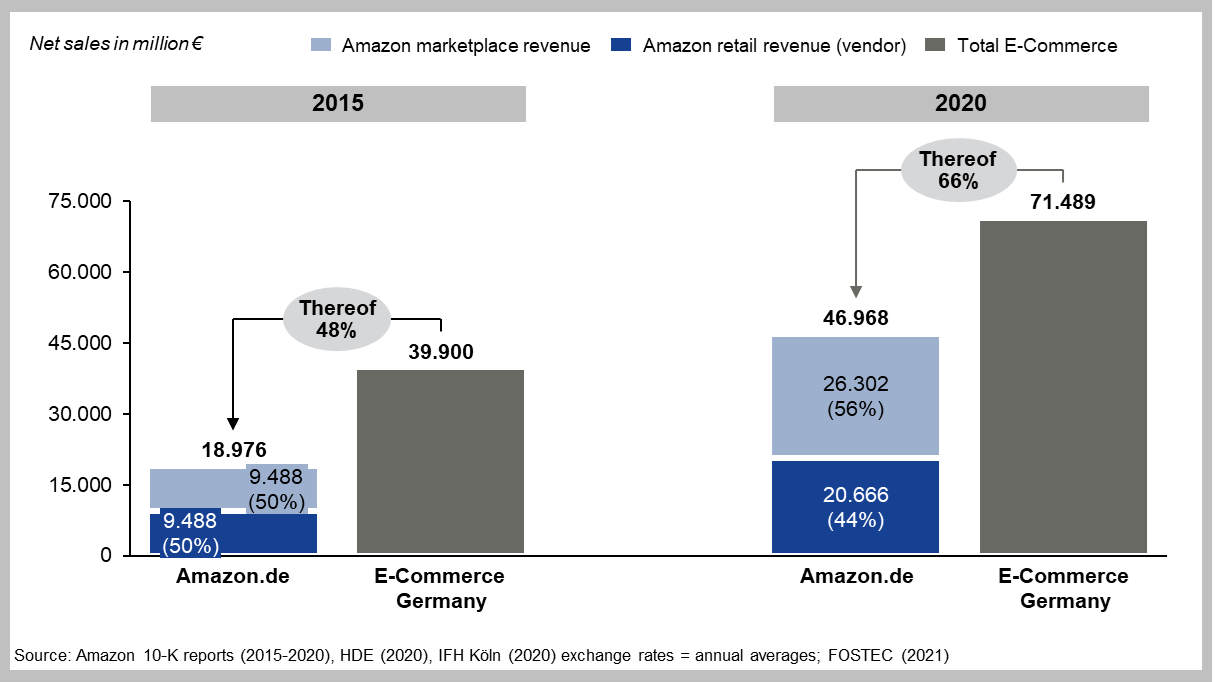
In light of the huge market potential associated with Amazon, more and more brands are seeking to use the online marketplace as a sales channel. However, sustainable success on Amazon requires a systematic strategy. Within such a strategy, manufacturers should aim answering the following key questions:
- Potential: What is the market potential on Amazon in the relevant product categories, what are the most attractive product categories and how are market shares currently distributed between the competitors?
- Business model: Which of the two Amazon business models (vendor or marketplace) makes the most economic and strategic sense?
- Marketing mix: How should the 5Ps be combined for sustainable growth on Amazon?
- Terms and conditions: How can Amazon contracts be drafted as sustainably as possible and how can cross-border trade challenges be solved?
- Organisation: How should one’s own organisation be set up in order to systematically promote and facilitate the Amazon business?
- Governance: How should roles and responsibilities within one’s own (Amazon-related) organisational structure be distributed in order to shape processes as efficiently as possible?
- Business plan: How “profitable” can the Amazon sales channel really be, considering all the benefits and costs?
In practice, there are many indications that manufacturers and retailers are entering the Amazon business without having answered these questions in a sufficiently strategic way. The following illustration shows the typical course of a brand’s relationship with Amazon, with and without a dedicated Amazon strategy:
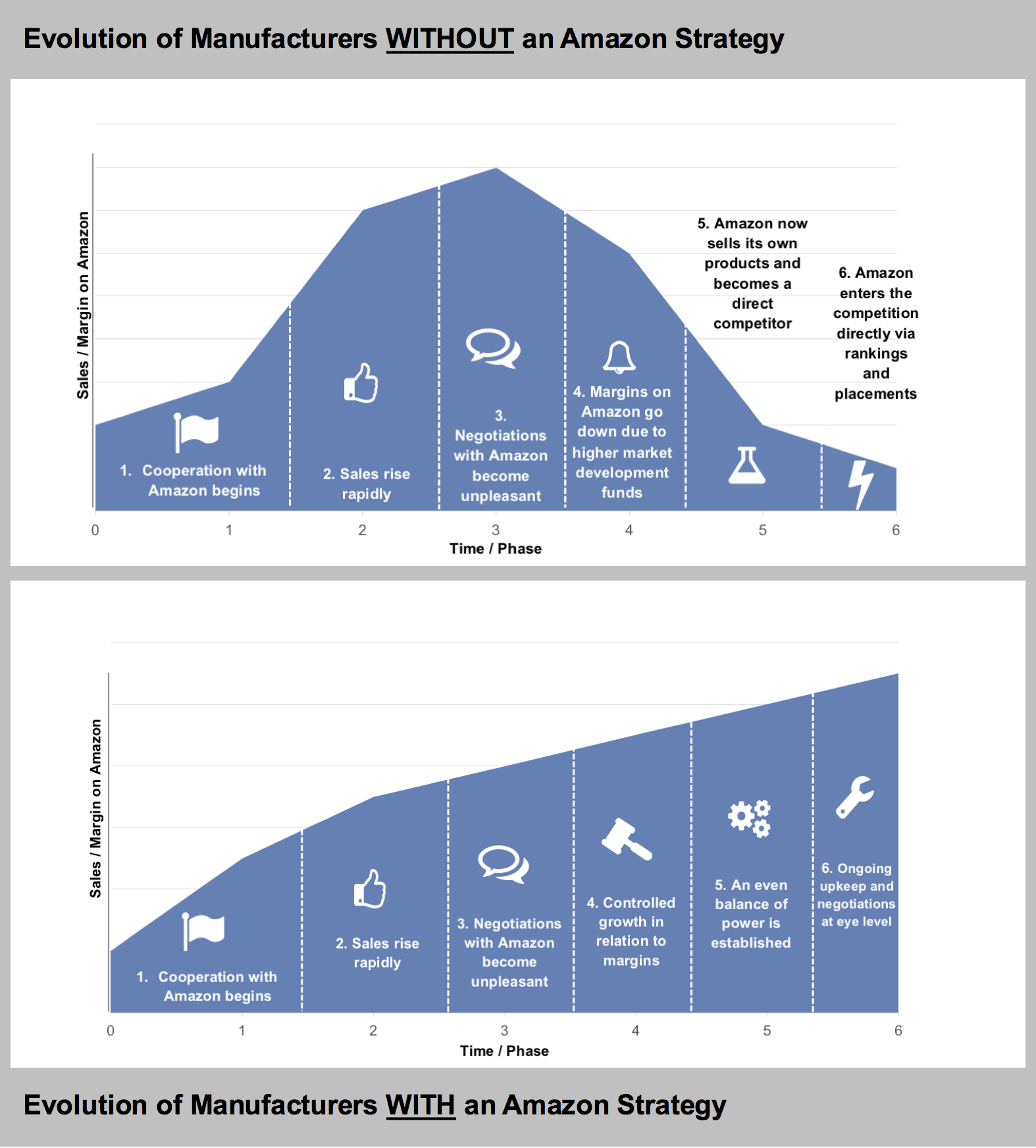
Based on these experiences and on numerous cross-industry projects, we have developed a seven-step Amazon Strategy Framework (ASF) for producing a business plan-based E-Commerce strategy:

I.) Potential Analysis
When we look at things from a process perspective, the subject of market intelligence usually represents the first step (in the development of an e-commerce strategy, for example). The reason for this is that a fact-based foundation is required right from the outset to enable a brand to evaluate the existing market potential and identify the most attractive segments. Only in the case of sufficient potential should the development of a corresponding strategy even be pursued. However, market intelligence also has a great deal of ongoing relevance. The ability to bring up real-time data enables the analysis of up-to-the-minute competitor intelligence data such as market shares or campaign results. Accordingly, marketing intelligence is essential not only in the preparation of strategic decisions, but also in the context of continuous performance management.
See here for further information on Amazon potential analysis und FOSTEC Market Intelligence.
The key aspects of this potential analysis include the following:
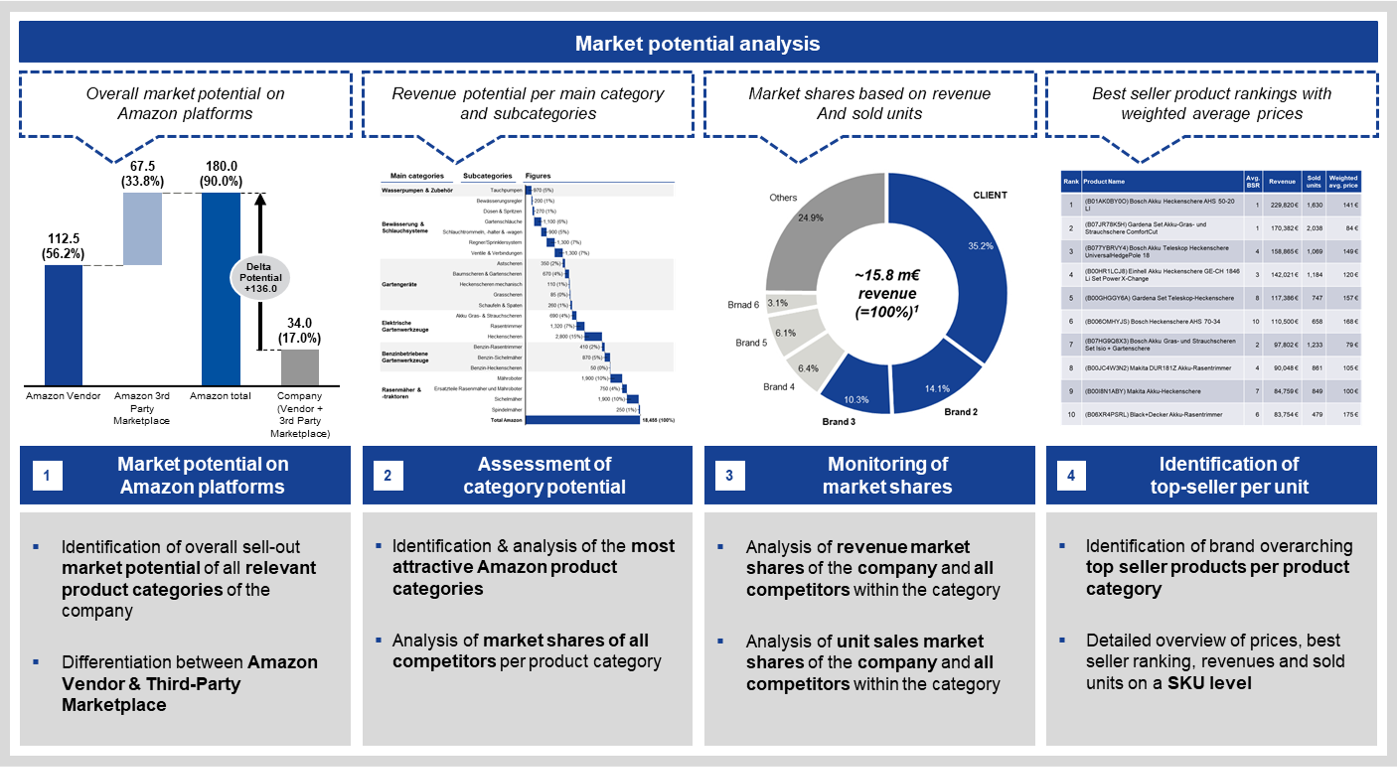
II.) Business Models
Amazon offers manufacturers and retailers (B2C and B2B) two basic business model options for the online marketplace: the “vendor” and “marketplace” model. Depending on the strategy (e.g. price sovereignty), a brand’s particular limitations (e.g. avoidance of direct channel conflicts), and the target group, negotiation of conditions and further aspects, there are different opportunities and risks associated with these two business models. As such, a sustainable Amazon strategy needs to be precisely analysed and assessed in regard to which of the two business models makes the most sense for the brand-specific use case from both an economic and strategic perspective. The core aspects of this include:
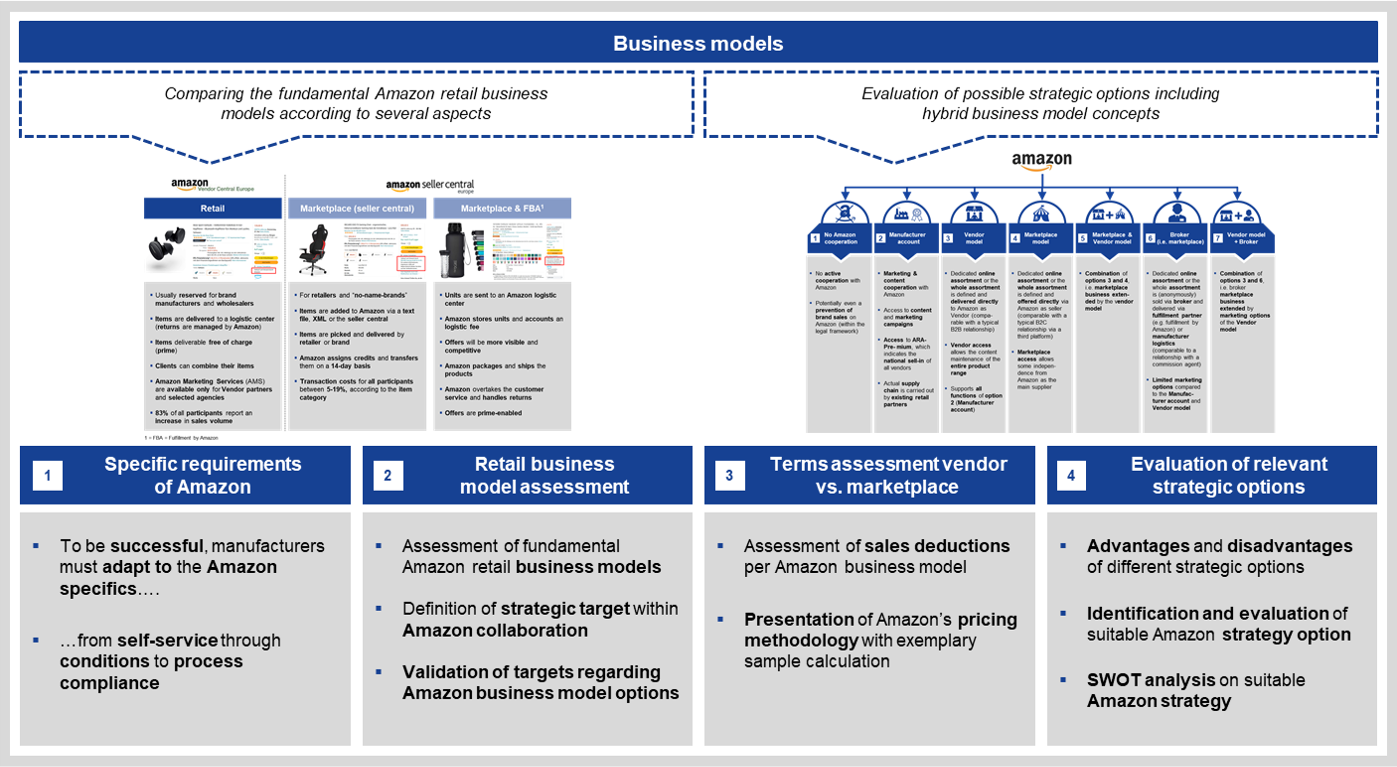
III.) Marketing Mix
Active management is required in order to achieve lasting success on the Amazon online marketplace. If a brand simply has their products listed, their desired growth goals can usually only be achieved on a short-term basis, if at all. Accordingly, a sustainable Amazon strategy involves active management of the “5Ps” (Product, Processes, Pricing, Personnel, Promotion) . The objective is to achieve stable best seller rankings for listed products and to permanently increase the brand’s conversion rates, which is achieved, above all, through excellent content (pictures, texts, keywords, videos, etc.) and consistently high online visibility as a result of systematic marketing measures. As such, the identification of areas of address is a vital part of a holistic Amazon strategy, whereby the following key aspects should be taken into account:
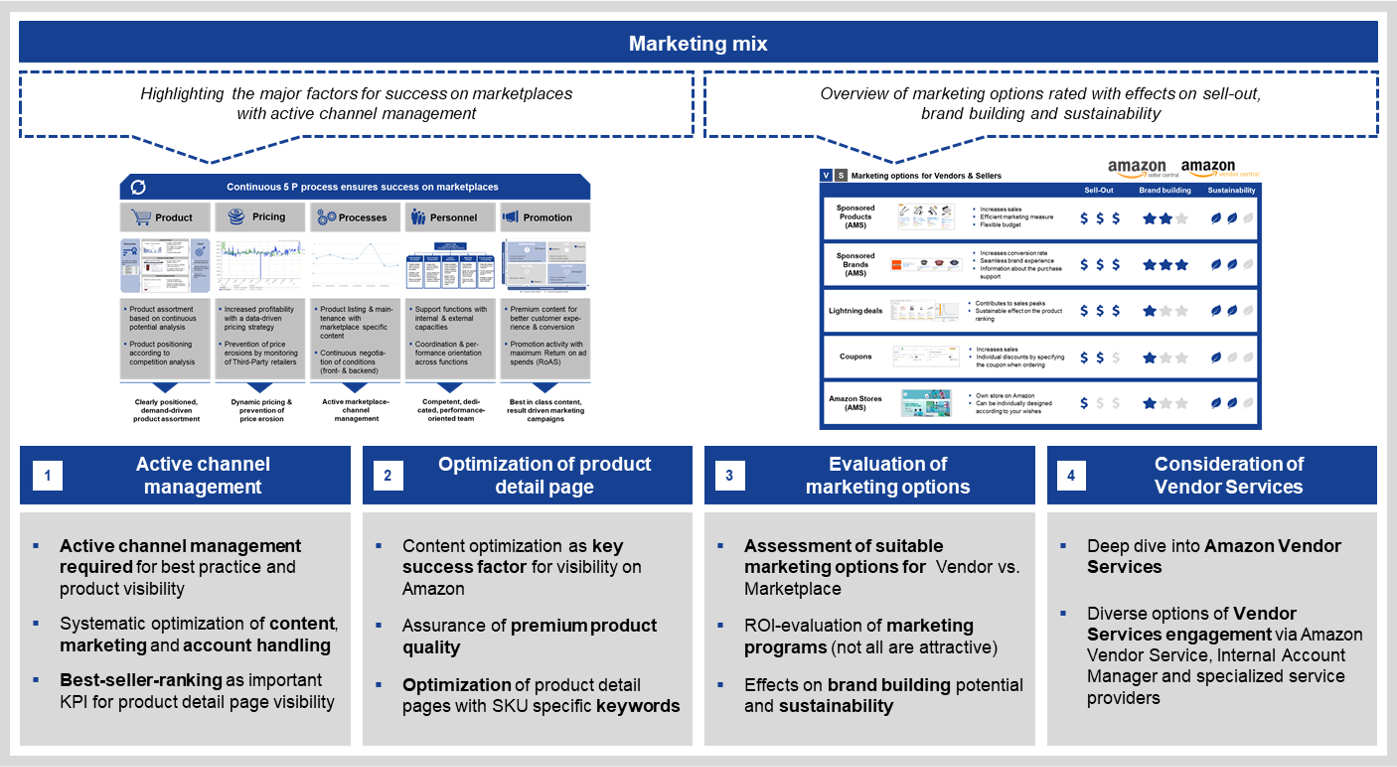
IV.) Terms & Conditions
As mentioned briefly in the overview, there are a number of possible outcomes of an Amazon business relationship. The course of this relationship affects the issue of margins and, ultimately, the overall profitability of the sales channel. In addition to the success of the actual product marketing, the conditions and contracts agreed with Amazon have a pivotal influence in this regard. In order to conduct complex Amazon contract negotiations in a sustainable fashion in favour of one’s own organisation, expert Amazon knowledge is required. This is the only way to negotiate front and back-end conditions in a target-driven manner, to anchor sales-promoting marketing measures in the contract and – as far as possible – to avoid expensive fines.
Another key driver in negotiations with Amazon is the cross-border harmonisation of conditions. Only by achieving this harmonisation can undesirable cross-border trade – where Amazon rapidly buys on more favourable terms from a different country organisation of the same company – be specifically avoided.
The following main aspects should be considered in regard to the issue of terms and conditions:
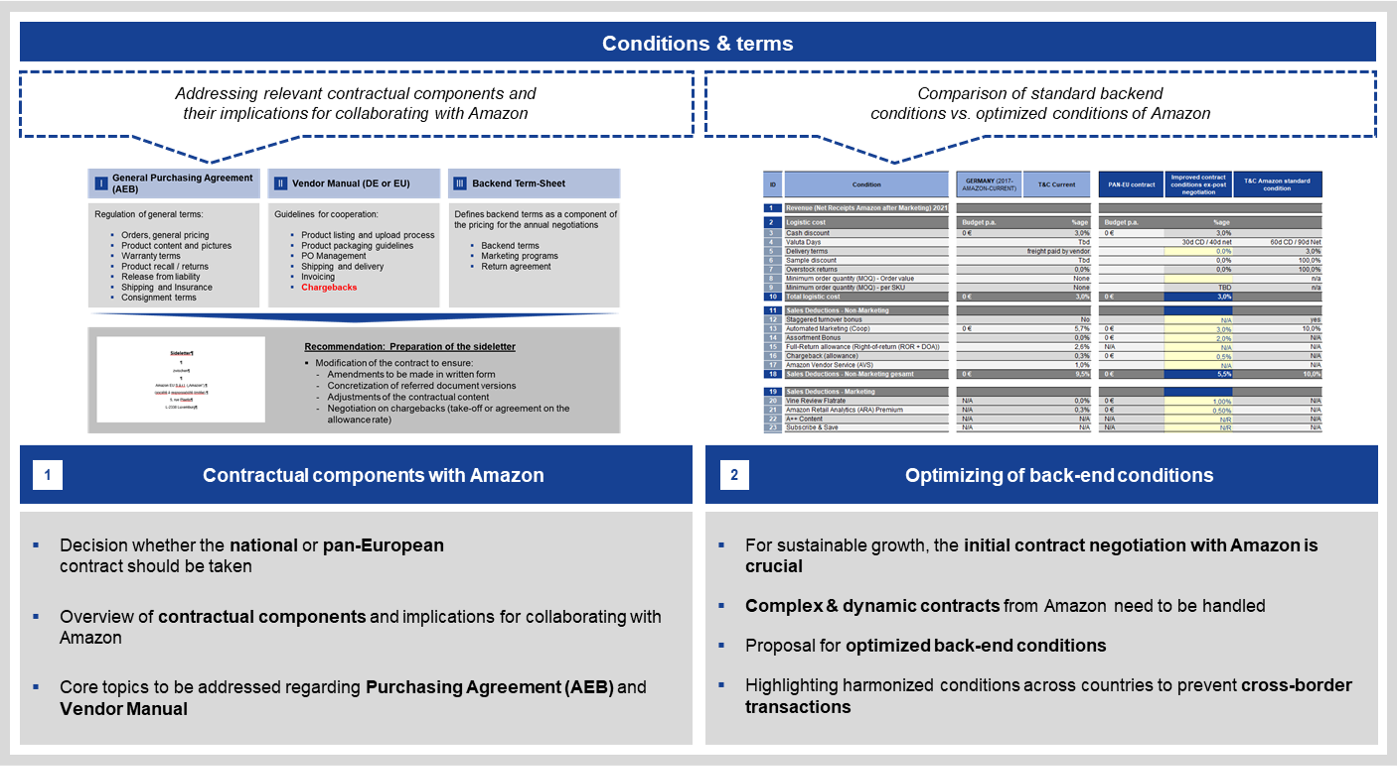
V.) Organisational Structure
As with the issue of marketing mix, it is important to adhere to specific requirements when organising your Amazon-related sales activities. This includes the provision of dedicated resources with specialised know-how and the collaboration of these resources with existing roles within your organisation. Above all, when developing an international e-commerce strategy, it is important to establish a lean but powerful Amazon organisational unit and to equip it accordingly. This is necessary to enable Amazon-specific tasks to be fulfilled with sufficient flexibility and thereby to realise agile growth. Essential core aspects of this include:
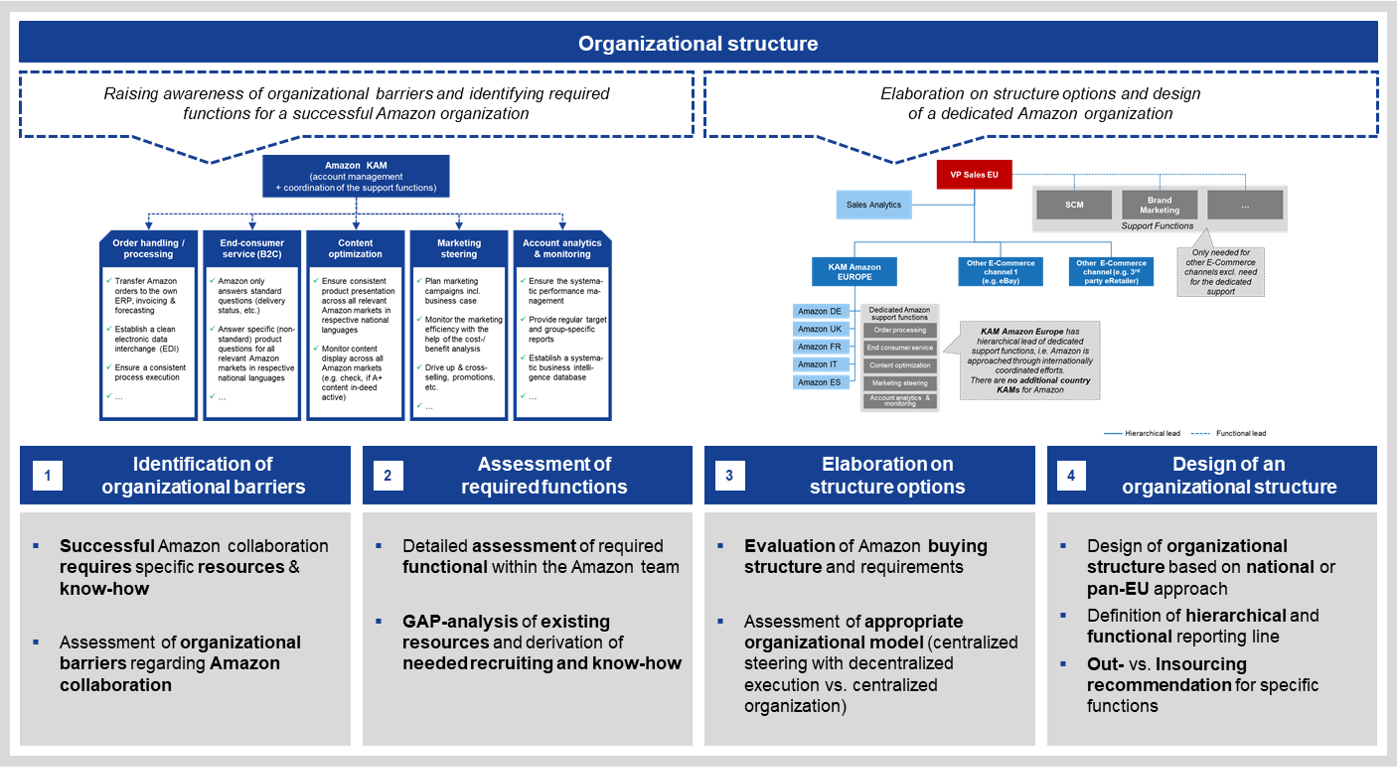
VI.) Governance
In addition to establishing a dedicated Amazon organisational unit, it is necessary to assign this unit with clear roles and to determine their areas of responsibility; only then will it be effective and able to ensure efficient processes. At the same time, the goal is to keep the overall organisational structure as streamlined as possible such that a reconciliation of in- and outsourcing is carried out at appropriate points within the chain. Core governance-related issues include:
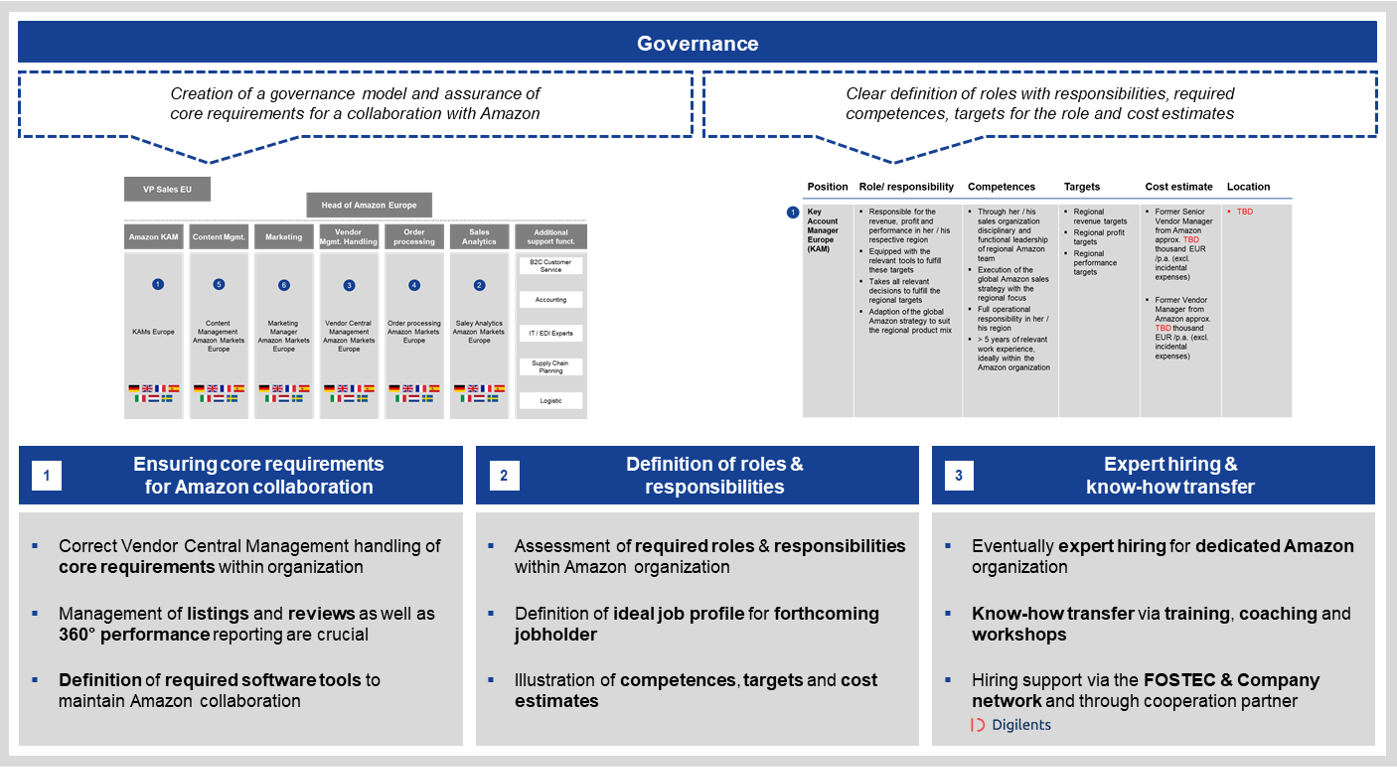
VII.) Business Plan
Notwithstanding the initial euphoria that the potential of the Amazon online marketplace can unleash, the associated opportunities and risks must be examined transparently and comprehensively by means of a business case. Accordingly, Amazon sales potential should be estimated based on the findings of a potential analysis for a relevant Amazon product line and, as a counter to this, the corresponding cost structure estimated in accordance with the previously defined requirements (conditions, marketing mix, organisational unit, etc.). Both subareas (revenue and costs) should then combined and evaluated in the interest of “economic truth”. The following core aspects must be taken into consideration in this regard:
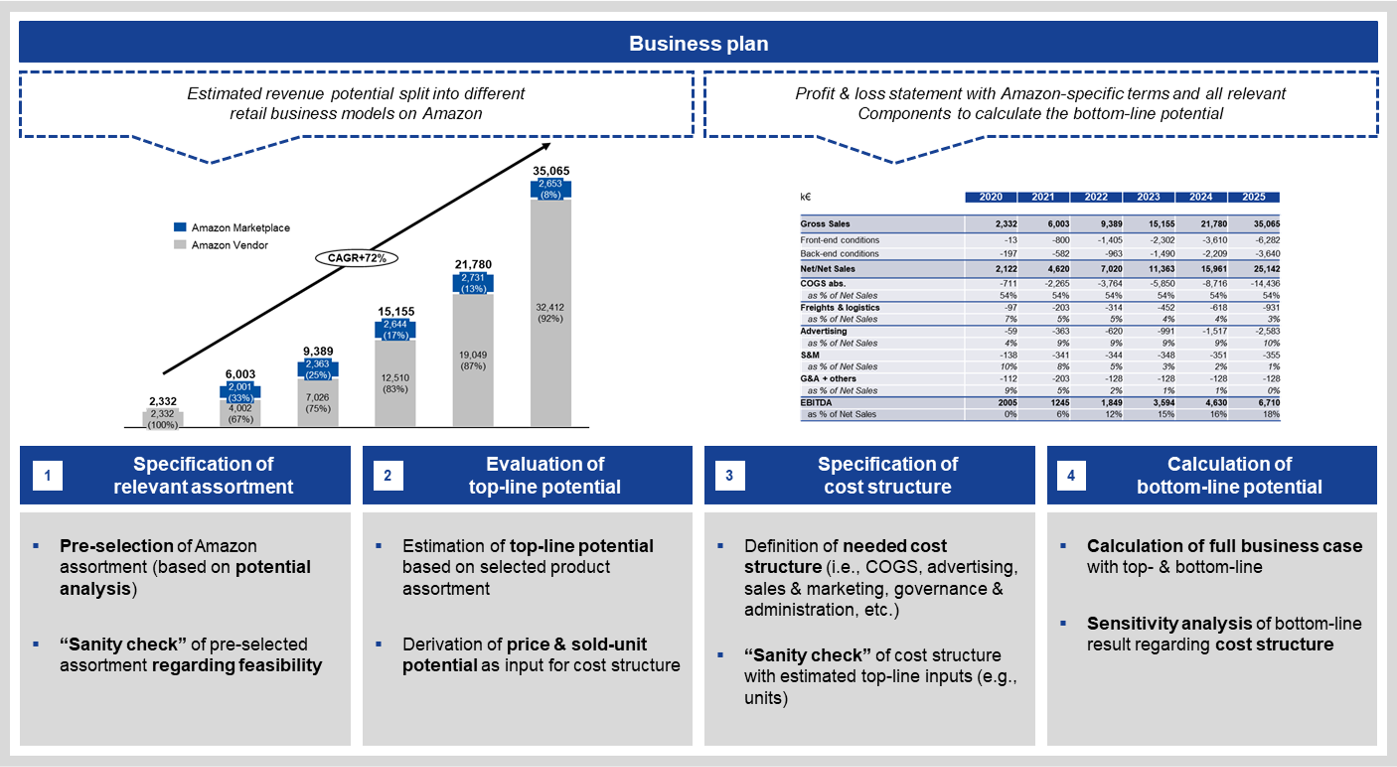
Amazon Strategy Consulting Services
Download an overview of our Amazon Strategic Consulting Services.
Please provide your name and email address to receive an email with the corresponding PDF file free of charge.







